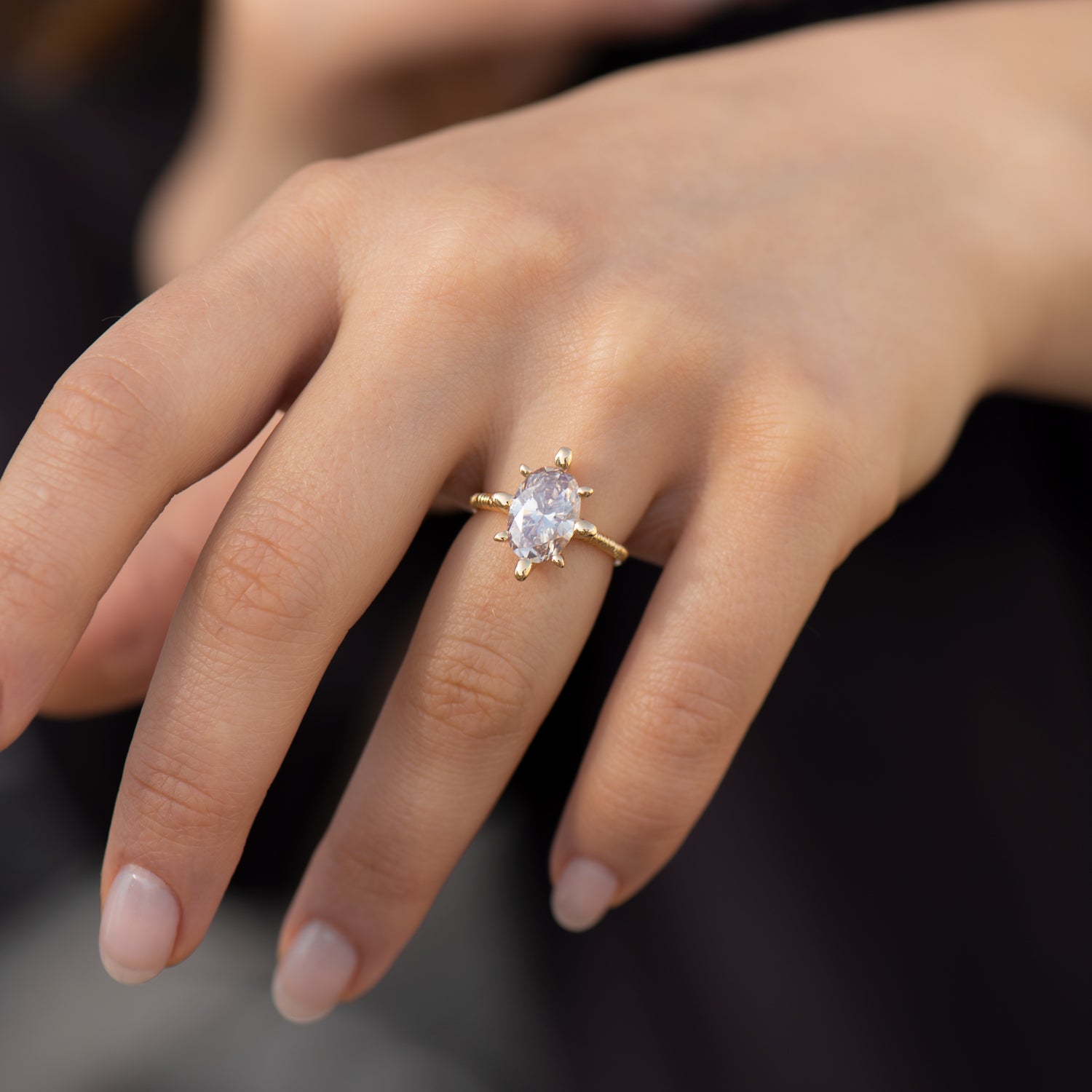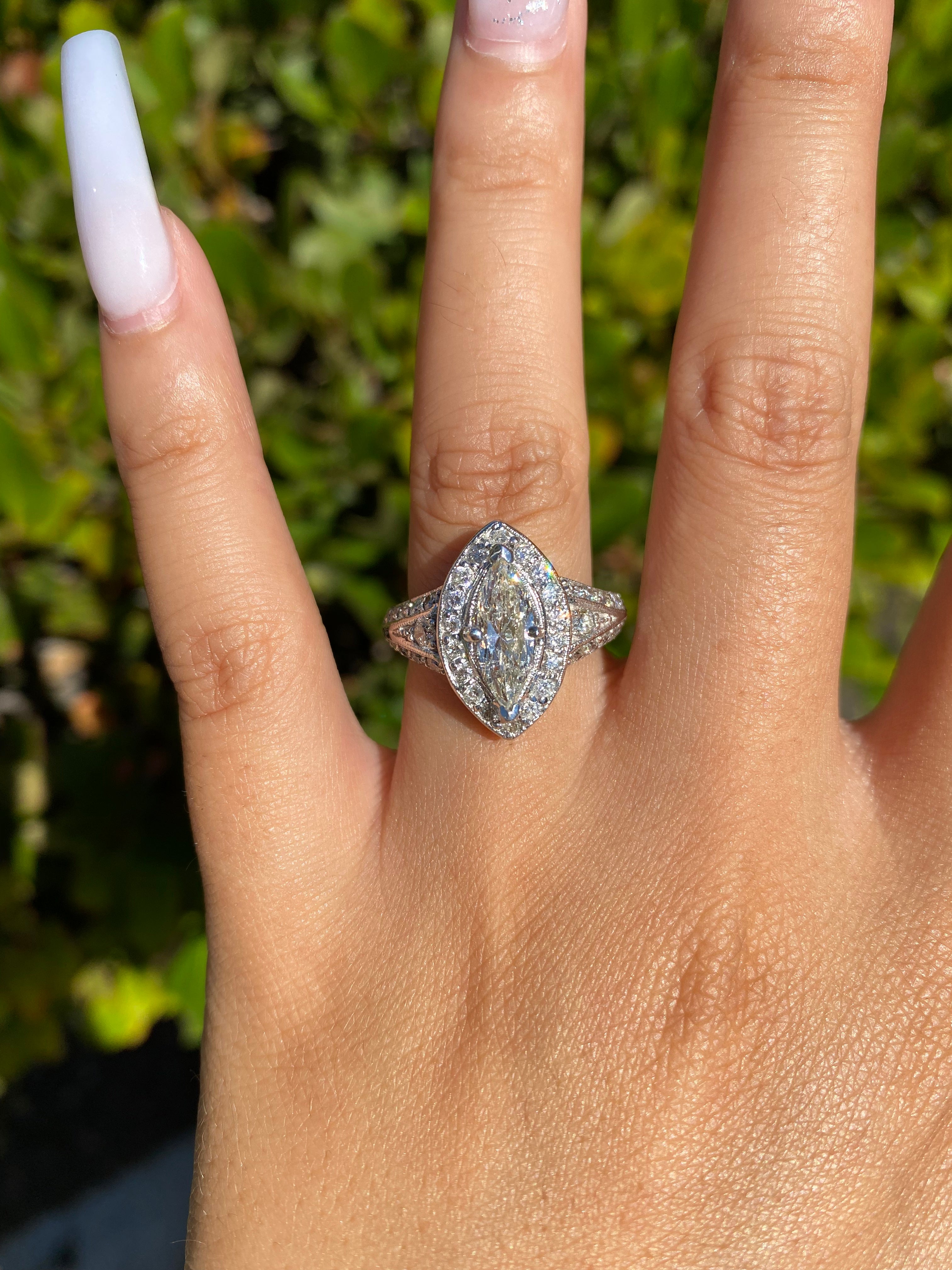Choosing lab grown diamond engagement rings: A Checklist for First-Time Buyers
Why Laboratory Grown Diamond Engagement Rings Are the Perfect Option for Eco-Conscious Couples
Lab-grown Diamond engagement rings present an engaging choice for couples who focus on sustainability. These diamonds offer a striking option to conventional mined rocks, considerably lowering ecological injury. They are produced using advanced methods that ensure both high quality and luster. As recognition of honest sourcing grows, numerous pairs are reevaluating their choices. What effects does this shift have for the future of the Diamond industry?

The Environmental Impact of Traditional Diamond Mining
Diamond mining has long been commemorated for its allure and status, the environmental consequences of typical mining techniques are increasingly concerning. The removal of rubies frequently involves comprehensive land interruption, leading to deforestation and environment loss for plenty of varieties. Furthermore, the process consumes substantial quantities of water, which can deplete regional resources and detrimentally impact bordering areas. Harmful chemicals made use of in mining operations can pollute neighboring water resources, additionally endangering both human populaces and wild animals.
Furthermore, the carbon footprint related to carrying mined rubies adds to the total ecological toll. The heavy equipment and tools needed for mining operations add considerably to greenhouse gas exhausts. As awareness of these concerns expands, lots of customers are beginning to question the sustainability of typical Diamond sourcing. This shift in viewpoint highlights the urgent need for even more environmentally pleasant options, such as lab-grown rubies, which assure to decrease the eco-friendly effect while keeping the charm and value of Diamond precious jewelry.
The Refine of Developing Lab-Grown Diamonds
Lab-grown rubies are created through two primary approaches: High Pressure High Temperature Level (HPHT) and Chemical Vapor Deposition (CVD) The HPHT procedure imitates the all-natural problems under which diamonds form in the Earth's mantle. It includes subjecting carbon to severe stress and temperature, resulting in the crystallization of carbon atoms right into Diamond frameworks. On the other hand, the CVD technique enables for the development of diamonds in a controlled atmosphere. This method makes use of a gas mix consisting of carbon, which is energized to develop plasma, enabling carbon atoms to deposit onto a substrate and grow layer by layer right into Diamond crystals.
Both techniques create diamonds that are chemically and physically similar to natural diamonds - lab grown diamond engagement rings. The option of method commonly depends on the wanted attributes and dimension of the last gem. This cutting-edge method to Diamond production not just offers a sustainable option but also permits for higher transparency in the sourcing of materials
Quality and Luster of Lab-Grown Diamonds
While many might presume that lab-grown diamonds differ in top quality from their natural counterparts, they actually show comparable sparkle and visual appeal. Lab-grown diamonds are produced using innovative modern technology that reproduces the all-natural conditions under which diamonds develop, causing rocks that possess similar physical and chemical buildings. These diamonds attain the same phenomenal clearness and shade grading as mined rubies, making them tantamount to the nude eye.
In regards to radiance, lab-grown rubies often show remarkable light efficiency as a result of their precision-cut facets. The extensive quality assurance during manufacturing guarantees that these diamonds meet high standards, enhancing their aesthetic appeal. Furthermore, they are readily available in a range of forms and dimensions, allowing couples to find the excellent ring to match their individual design. Eventually, lab-grown rubies provide an exquisite combination of appeal and high quality, making them an appealing choice for involvement rings.
Honest Considerations in the Diamond Industry
As consumers end up being increasingly familiar with the moral effects surrounding Diamond sourcing, the conversation around the Diamond market has actually moved considerably. Worries regarding dispute rubies, frequently described as "blood diamonds," have actually prompted require higher openness and liability in mining methods. These rubies are extracted in battle zone and sold to finance armed problem, raising severe moral questions for customers. Additionally, the environmental influence of standard Diamond mining has actually come under scrutiny, with problems such as habitat destruction and water air pollution regularly highlighted.
In reaction, many have transformed to lab-grown diamonds as an extra honest option. These stones are created in controlled environments, removing the threats associated with mining. Lab-grown dig this rubies appeal to customers seeking to make responsible choices that align with their worths. The expanding need for honest techniques proceeds to reshape the Diamond sector, promoting humane and lasting sourcing methods.
Cost-Effectiveness of Lab-Grown Diamonds
Lab-grown diamonds offer an engaging choice for customers seeking cost-efficient interaction rings - lab grown diamond engagement rings. Priced significantly less than their all-natural equivalents, they provide exceptional worth for money without sacrificing quality or look. This price makes lab-grown rubies an attractive alternative for budget-conscious couples
Reduced Cost Point
Lots of pairs are uncovering that opting for lab-grown Diamond interaction rings can considerably reduce their general prices without giving up quality or charm. These diamonds usually cost 30% to 50% much less than their extracted counterparts, making them an appealing alternative for budget-conscious customers. The rate benefit emerges from lower production costs and an extra efficient supply chain, which eliminates the expenditures related to mining. Because of this, pairs can buy bigger rocks or more intricate settings, improving the total aesthetic of their rings. This cost not just permits an extra individualized selection however also straightens with the values of eco-conscious pairs who prioritize sustainability while staying financially savvy. Lab-grown rubies supply an ideal blend of style and economy.
Worth for Money
The cost-effectiveness of lab-grown diamonds extends beyond their first price, using remarkable value for money. Unlike natural rubies, lab-grown choices can be approximately 40% less costly while preserving the exact same physical and chemical buildings. This affordability allows couples to purchase bigger or higher-quality stones without surpassing their spending plans. In addition, the resale worth of lab-grown rubies is slowly improving, making them a much more viable choice for future economic factors to consider. Additionally, lab-grown diamonds frequently include lower environmental and ethical prices, giving pairs with peace of mind. By picking lab-grown diamonds, eco-conscious pairs not only save money however also add to sustainable techniques, improving their general value suggestion in the fashion jewelry market.

Personalization Options for Lab-Grown Engagement Rings
How can pairs ensure their engagement ring mirrors their special romance? Personalization options for lab-grown Diamond involvement rings give an ideal solution. Couples can pick from numerous Diamond shapes, including round, princess, or oval, enabling them to select a style that reverberates with their individual visual.
In addition, they can pick the setup-- be it jewelry, halo, or vintage-inspired-- making certain the ring enhances the Diamond's sparkle. Steel choices, such as white gold, yellow gold, or rose gold, additionally enhance customization, satisfying individual tastes.
Furthermore, couples can incorporate meaningful inscriptions, including a nostalgic touch that represents their bond. With these comprehensive modification alternatives, lab-grown Diamond interaction rings not just personify a couple's love but also reflect their worths, making them a perfect option for eco-conscious collaborations. Ultimately, these rings become a true depiction of their unique journey together.
Regularly Asked Concerns
How Do Lab-Grown Diamonds Compare to Natural Diamonds in Value?
Lab-grown rubies normally cost 20-40% much less than all-natural index diamonds, providing comparable top quality and look. imp source Their reduced rate point makes them an appealing alternative, especially for budget-conscious consumers seeking lasting and ethical options in jewelry.

Are Lab-Grown Diamonds More Durable Than All-natural Diamonds?
Lab-grown diamonds have the very same physical and chemical residential properties as natural rubies, including toughness. Both kinds score a perfect 10 on the Mohs scale, making sure that lab-grown rubies are just as immune to damaging and damage.
Can Lab-Grown Diamonds Be Resold Quickly?
Lab-grown rubies can be resold, yet their market need differs contrasted to natural rubies. While some purchasers value their honest beginnings, others may prefer all-natural alternatives, possibly impacting resale value and convenience of deal.
What Are the Treatment Instructions for Lab-Grown Diamonds?
Lab-grown rubies call for regular treatment to maintain their brilliance. Cleaning up with moderate soap and cozy water, using a soft brush, and staying clear of severe chemicals will certainly assist preserve their shimmer and stability for many years to find.
Are There Any Accreditations for Lab-Grown Diamonds?
Lab-grown diamonds can be licensed by respectable organizations such as the Gemological Institute of America (GIA) and the International Gemological Institute (IGI) These qualifications ensure top quality, adherence, and authenticity to market criteria for lab-created gemstones.
Both approaches produce diamonds that are chemically and literally the same to all-natural rubies. Lab-grown rubies are produced utilizing advanced innovation that reproduces the natural problems under which diamonds develop, resulting in stones that have similar physical and chemical residential or commercial properties. Lab-grown rubies typically set you back 20-40% less than all-natural rubies, supplying similar high quality and appearance. Lab-grown diamonds have the exact same physical and chemical homes as all-natural rubies, consisting of longevity. Lab-grown diamonds can be resold, yet their market demand varies contrasted to natural rubies.